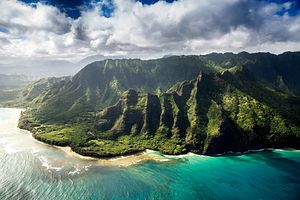The recent meeting of the Polynesian Leaders’ Group (PLG) in Tuvalu was most notable for the admission of three new members into the institution. These new members — New Zealand, Hawaii, and Rapa Nui (Easter Island) — are all contentious additions to the forum. However, in looking to expand its influence and reach, the PLG decided that the Polynesian heritage and continual components of these administrations were sufficient for their qualification. The three new members form the points of the Polynesian Triangle, the geographic outline of what is considered the Polynesian region within the Pacific.
The PLG was formed in September 2011 when Samoan Prime Minister Tuilaepa Sa’ilele Malielegaoi initiated a meeting with the leaders of Tonga, Tuvalu, the Cook Islands, and Niue on the margins of the Pacific Islands Forum (PIF) summit in Auckland. The idea for the new forum was modeled after the Melanesian Spearhead Group, and designed to bring together the independent or self-governing countries or territories of Polynesia to address mutual concerns. Since that initial meeting the PLG has expanded to also include American Samoa, French Polynesia, Tokelau, and Wallis and Futuna, and now its three new members.
The forum has continued to consider whether to extend an invitation to join the PLG to Fiji. Fiji is considered a Melanesian country, but maintains a Polynesian cultural influence, particularly in the Lau Islands of eastern Fiji, considered the meeting point of the Polynesian and Melanesian cultures.
The PLG’s initial memorandum of understanding states that the forum would “seek a future for our Polynesian people and countries where cultures, traditions and values are honored and protected. Where sustainable economic prosperity is achieved, where democratic values are observed, human rights promoted and protected as well as upholding the rule of law.” The forum would also endeavor to cooperate in the fields of “education, culture and language, transport, environmental conservation and climate change mitigation and adaptation, health, agriculture and fisheries, tourism, trade and investment.”
The new additions to the PLG now make it the largest bloc within the Pacific Island Forum (although Hawaii and Rapa Nui are outside the PIF), which should increase its regional influence. Dr. Anna Powles, Senior Lecturer in Security Studies at Massey University in New Zealand told The Diplomat that “the PLG has the potential to be a galvanizing force on key issues such as regional cooperation, for example the proposed Polynesian Cable Network or the Manatua regional submarine telecommunications fiber optic cable which has been spearheaded by Samoa; climate change, as outlined in the PACT or Polynesia Against Climate Threats which the PLG took to COP 21; and decolonization issues.”
There is some intrigue around the membership of Hawaii and Rapa Nui, two regions attached to larger states, the United States and Chile respectively, whose concerns are not primarily in the South Pacific. This poses questions about how the United States and Chile will approach their territories’ admission into the forum. Powles sees the addition of Hawaii into the PLG as of some benefit to the United States’ wider strategic interests (alongside its interest with American Samoa). “Given Washington’s apparent renewed interest in the Pacific, which is largely driven by concerns over growing strategic anxiety in regards to Chinese influence and access in the Pacific,” Powles notes, “it is possible that Washington might view Hawaii and American Samoa’s membership of the PLG as a means to obtain greater leverage and influence over PLG policy – such as seeking to establish collective agreement on specific issues of strategic concern.” However, she adds, “it is not likely that the PLG would cede the principles upon which it was established.”
How Chile views the addition of Rapa Nui to the PLG also poses a number of interesting questions — especially given the interest in decolonization among Polynesian leaders (echoing similar concerns among the Melanesian Spearhead Group). There could be the potential for the forum to become involved in Rapa Nui’s push for more administrative autonomy from Chile, both on an advocacy level, and with the forum will serving as a way for the island to gain some leverage in Santiago.
Forming the outer reaches of the Polynesian Triangle, Hawaii and Rapa Nui are not as regionally integrated as the other members, and are also not members of the larger Pacific Island Forum, the South Pacific’s primary multilateral framework (covering Polynesia, Melanesia, Micronesia, and Australia). Yet as Pacific Islands they have similar concerns, particularly around issues of climate change, but also how finite marine resources are utilized, and the geographic hurdles involved in the delivery of basic services. These are issues which often require shared knowledge and collective positions to find constructive solutions.
Furthermore, the addition of New Zealand and Hawaii should dramatically increase the resources available to the PLG. Currently without a secretariat for its operations, and without a website to communicate its positions, the forum’s effectiveness is hampered by its lack of infrastructure. Using expansion to address these facets of the PLG’s operations should now be a primary concern for the forum.

































